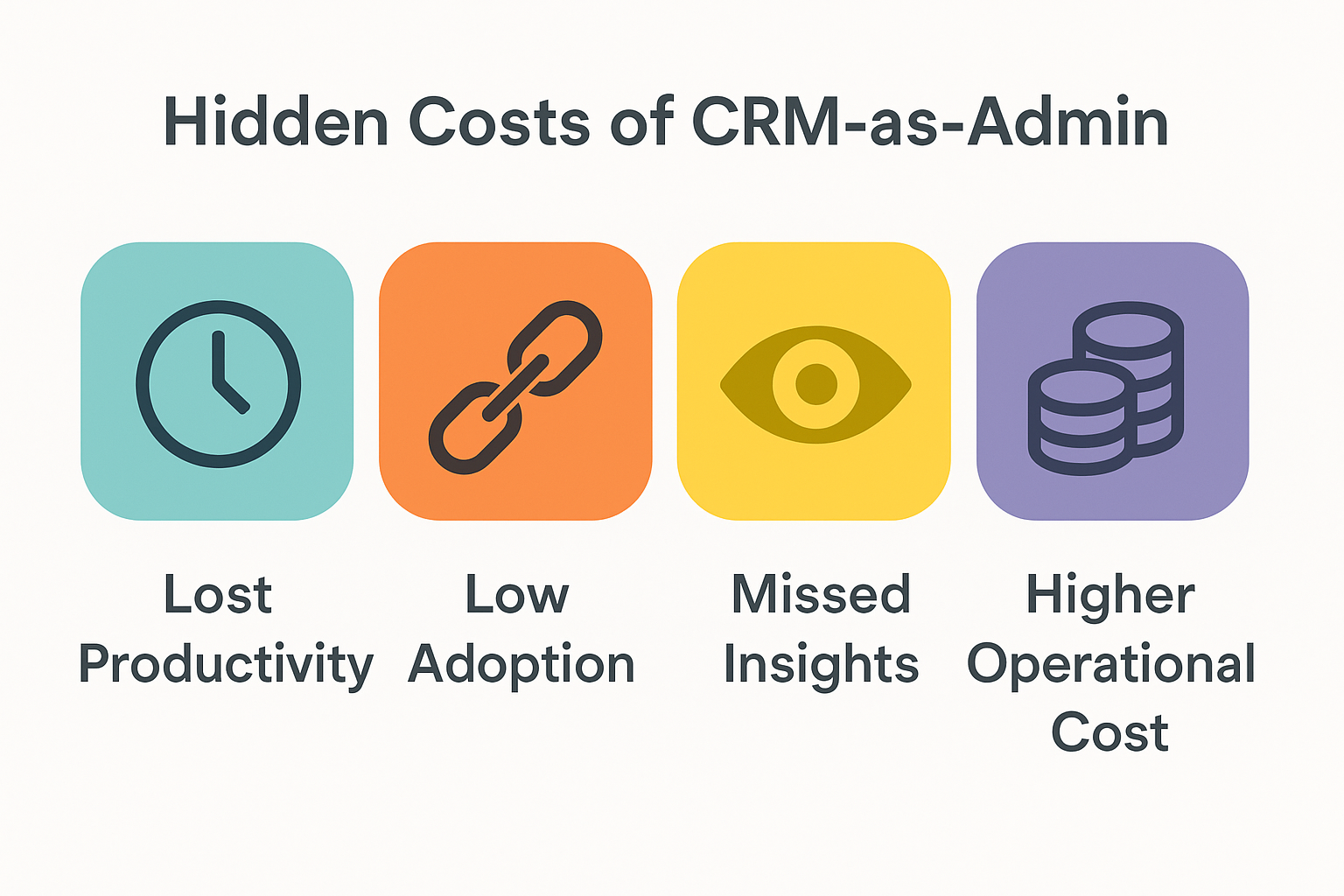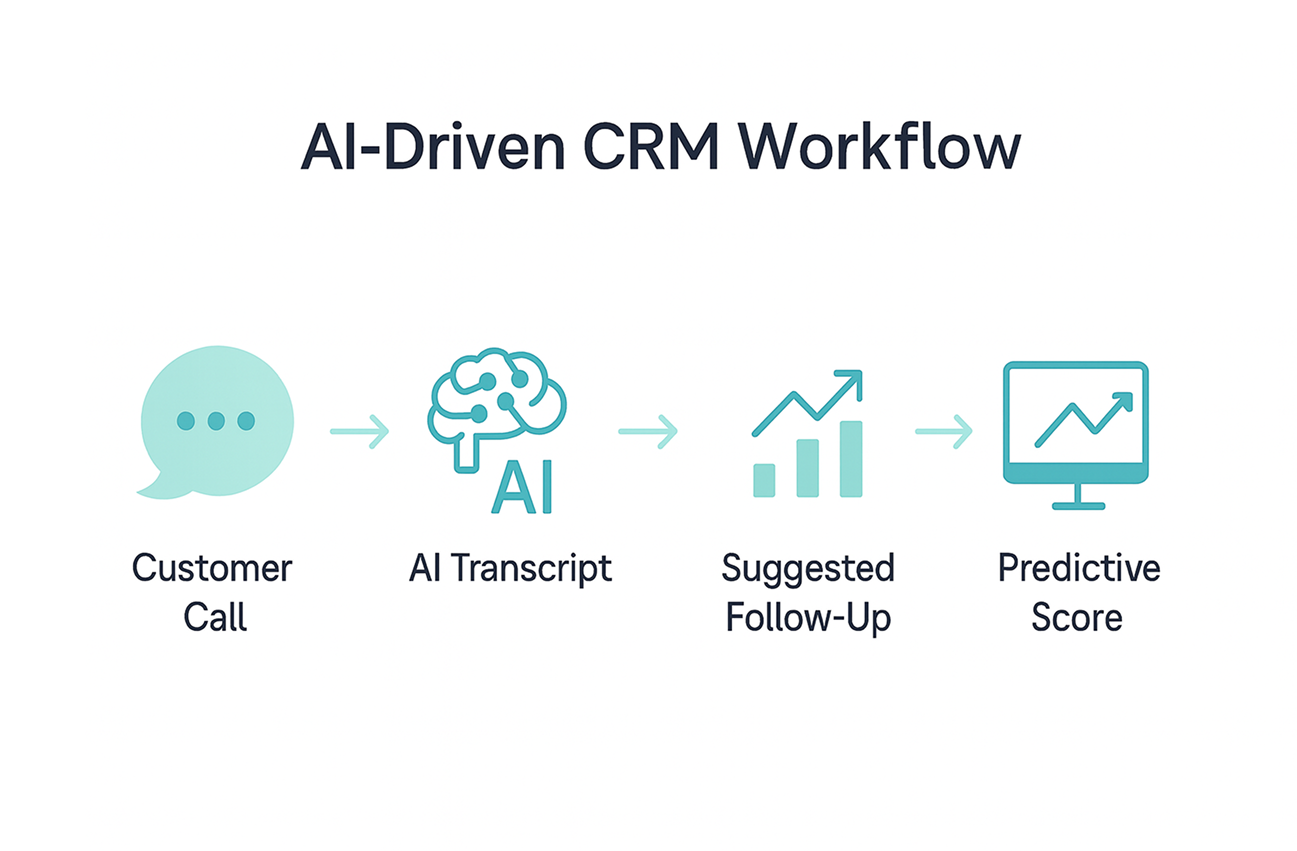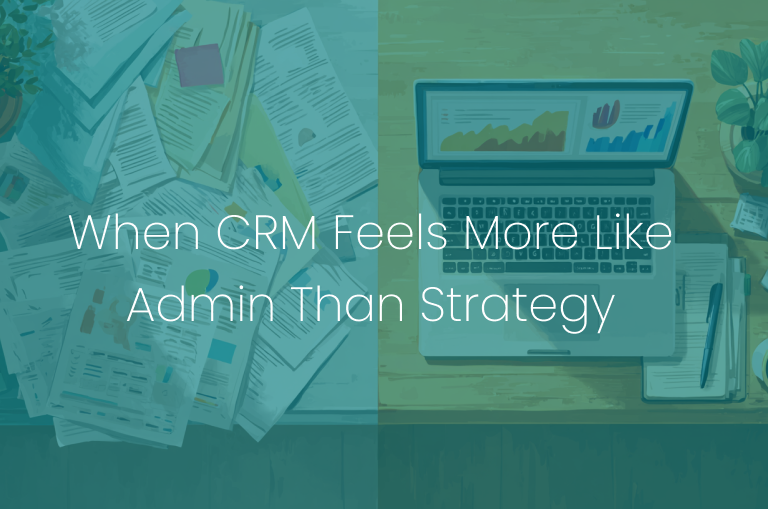When CRM Feels More Like Admin Than Strategy
Introduction: Why CRM Sometimes Feels Like Extra Work
For many organisations, customer relationship management systems promise strategic insight but often end up as an extra layer of admin. Sales teams log calls, update fields, and tick boxes without seeing clear value. Leaders expect insights, yet dashboards rarely tell more than what happened last quarter.
This disconnect matters. When a CRM feels like an administrative tool rather than a growth driver, adoption stalls, productivity suffers, and the strategic promise is left unfulfilled. The good news is that technology has matured - particularly with AI and modern integration - to reposition CRM at the centre of decision-making and customer value.
CRM’s Original Purpose vs Reality Today
At its core, CRM is designed to unify customer information, enhance collaboration, and facilitate strategic planning. It should be the single source of truth for customer interactions, enabling businesses to anticipate needs and drive revenue.
The reality in many organisations looks different. CRMs often function as digital filing cabinets, capturing activity logs rather than shaping future actions. Sales professionals see them as compliance tools, while leaders still rely on spreadsheets for decision-making.
This mismatch is widespread. Gartner predicts that by 2026, 65% of B2B sales organisations will transition from intuition-based to data-driven selling, relying on CRM as a core enabler of strategy rather than simply record-keeping. Platforms like Microsoft Dynamics 365 are specifically designed to bridge this gap by combining operational efficiency with predictive insights.
The Hidden Costs of CRM-as-Admin
Treating CRM as an admin platform comes with costs that are often invisible until they compound.
-
Lost productivity - teams spend hours entering data manually instead of selling or building client relationships.
-
Low adoption - if staff cannot see strategic value, they will resist updates and use alternative workarounds.
-
Missed insights - valuable data stays siloed, preventing leaders from spotting trends or risks early.
-
Higher operational cost - licences and support fees are paid without delivering tangible business outcomes.
| CRM Use Case | Admin Outcome | Strategic Outcome |
|---|---|---|
| Data entry | Time lost on manual updates | AI captures notes automatically |
| Reporting | Backward-looking snapshots | Predictive forecasts for pipeline health |
| Customer visibility | Fragmented across systems | Unified 360° view of relationships |
Organisations often underestimate these costs until adoption challenges trigger larger change programmes. At ARP Ideas, we frequently encounter businesses where underused CRMs sit alongside spreadsheets, doubling the workload and diluting trust in data.

Signs Your CRM Needs a Strategic Upgrade
How do you know if your CRM is stuck in admin mode? These warning signs are common:
-
Sales teams complain about time wasted on updates. If the system feels like paperwork rather than a tool, adoption will always lag.
-
Leadership relies on spreadsheets instead of dashboards. This signals a lack of trust in CRM reports.
-
Customer experiences feel disconnected. Without integrated data, marketing, sales, and service teams struggle to work together.
-
Reports explain the past but not the future. A lack of predictive or proactive insights means decisions remain reactive.
When several of these apply, it’s a clear indicator that CRM is failing to serve its strategic role.
Shifting from Admin to Strategy with AI and Integration
The shift requires more than better training. Technology itself must remove admin burden and surface actionable insights.
AI-driven assistance
Microsoft Dynamics 365 Sales includes conversation intelligence, predictive scoring, and Copilot features that automatically capture interactions, suggest the best actions to follow, and forecast opportunities. Instead of entering notes, sales teams see tailored prompts and recommendations.
Integration with wider data platforms
When connected to Microsoft Fabric, CRM data blends with finance, supply chain, and operations. This turns isolated customer records into enterprise-wide intelligence. Leaders gain real-time visibility, not just quarterly summaries.
Practical benefits
-
Salespeople spend more time with clients, less time updating forms.
-
Leaders receive forward-looking dashboards.
-
Customer service teams can anticipate issues before they escalate.
-
Insights become accessible across the business, not confined to sales.
This combination transforms CRM into a strategic hub for growth rather than a digital ledger.

A Scenario: From Reporting Burden to Growth Engine
Consider a mid-sized services company struggling with its CRM. Salespeople resisted updates, reporting accuracy suffered, and leaders relied on Excel. Forecasts were always late and usually wrong.
After adopting Dynamics 365 with Copilot, call summaries and follow-up actions were captured automatically. Predictive scoring highlighted opportunities most likely to close, allowing managers to allocate resources strategically. Integration with Microsoft Fabric gave finance and operations teams visibility into the same customer data.
The outcome was clear: sales adoption improved, leaders trusted CRM reports, and forecasting accuracy increased. The CRM became a growth engine rather than a reporting burden.
At ARP Ideas, we’ve seen similar transformations across industries - once the system starts working for teams rather than against them, adoption and value follow naturally.
Addressing Objections and Myths
“AI will replace human judgment.”
AI augments rather than replaces expertise. Predictive models highlight patterns, but decisions still rest with humans. Experienced professionals remain central to interpreting context.
“CRM upgrades are too expensive.”
While investment is required, the return on investment is well-documented. Forrester’s study of Microsoft Dynamics 365 Sales found an ROI of 215% over three years. The cost of inefficiency often outweighs the licence fees.
“Teams won’t adopt new tools.”
Resistance is real, but automation reduces the workload rather than adding to it. Features like Copilot lower the entry barrier by simplifying everyday tasks. Training and change management remain essential, but intuitive design makes adoption easier.
Future Outlook: CRM as a Strategic Growth Hub
The next wave of CRM innovation will focus on anticipation rather than reaction. AI will highlight opportunities before they surface, and integration will extend beyond sales to finance, logistics, and supply chain.
We expect CRM to evolve into a connected intelligence hub, shaping strategy across the business. As Microsoft invests in the Dynamics 365 ecosystem and links it with Fabric and Azure AI, companies that modernise now will be best placed to capture this advantage.
At ARP Ideas, we work with organisations to turn these possibilities into tangible outcomes - designing CRM solutions that fit strategy rather than paperwork.
Key Takeaways
-
CRM can become either an administrative burden or a growth driver.
-
Warning signs include low adoption, reliance on spreadsheets, and reactive reporting.
-
AI and integration unlock CRM’s strategic role by removing admin and surfacing insights.
-
Microsoft Dynamics 365 Sales and Copilot lead the way in practical, ROI-driven improvements.
-
The future of CRM lies in proactive, connected intelligence that spans the entire enterprise.
FAQ
Is CRM automation suitable for all business sizes?
Yes. Mid-sized companies often achieve the fastest results as automation frees teams from administrative tasks and improves data quality.
How quickly can a business see ROI from CRM improvements?
Results vary, but studies show many organisations achieve measurable ROI within the first 12 months of adoption, especially in sales productivity.
Will AI make CRM too complex for staff?
No. AI simplifies tasks by capturing information automatically and providing recommendations in context.
What role does integration play in CRM value?
Integration ensures data is consistent and visible across departments, eliminating silos and supporting cross-functional strategy.
Conclusion
When CRM feels like admin, the system is failing its purpose. Modern solutions, such as Microsoft Dynamics 365 Sales and Copilot, transform CRM into a strategic hub that drives growth, improves adoption, and delivers actionable insights.
Ready to turn your CRM into a growth engine? Get in touch with ARP Ideas to explore how we can help you unlock the strategic value of your CRM.


